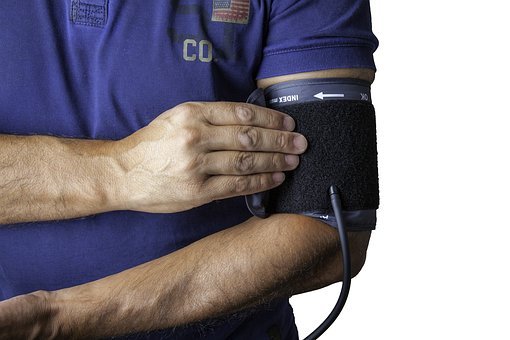Blood Pressure During Vigorous Exercise
During exercise, your blood pressure and heart rate must increase to keep up with the demand of blood flow. Your working muscles need the oxygen inside your blood to produce the energy for you to move. Your blood pressure responds in a similar manner to vigorous exercise as to any exercise--progressively and directly with intensity.

source
SYSTOLIC RESPONSE
Systolic blood pressure is the pressure your blood puts on your vessel walls during a contraction. Systolic blood pressure must increase during exercise to meet the need for increased blood flow. An increase in blood pressure allows your heart to meet the needs of the working muscles while still supplying necessary blood to vital organs such as the heart and brain. As intensity increases, so does systolic blood pressure. A healthy systolic pressure is 120 mmHg or lower at rest. It can rise up to 180 mmHg or more with vigorous to maximal exercise. The amount your blood pressure rises with vigorous intensity varies based on your physical fitness.
DIASTOLIC RESPONSE
Diastolic pressure is the force of blood flow while the heart is filling. This occurs between beats. A normal resting diastolic blood pressure is 80 mmHg or less. During exercise, diastolic pressure changes little, if at all. It may even decrease up to 10 mmHg while you are exercising, even when exercise is vigorous. An increase in diastolic pressure of 15 mmHg or more could indicate underlying arterial disease.
ISOMETRIC EXERCISE
Isometric exercise is not vigorous in the sense that you are moving quickly, but it is intense and hard on the heart. Isometric exercise is the production of force by your muscles but without movement. Since there is no movement, blood vessels to the working muscles are constricted. During dynamic exercise, these blood vessels would dilate to increase blood flow to the muscle performing the activity. It is because of this vasoconstriction that both your systolic and diastolic pressures rise.
HYPERTENSIVE PATIENTS
A hypertension diagnosis means your blood pressure is elevated even at rest. While exercise is beneficial for lowering your resting blood pressure, it is best for hypertensive patients to steer clear of vigorous exercise. Those with high blood pressure react differently to vigorous exercise than healthy persons. An increase in nerve activity keeps the blood vessels to working muscles more constricted than a person without hypertension. This can be dangerous for your health and increase your blood pressure to unsafe levels during exercise. The best way to use exercise as a means to lower your blood pressure is to participate in a moderate intensity aerobic program for 30 to 45 minutes most days of the week. Gain medical clearance from your doctor before starting your program.